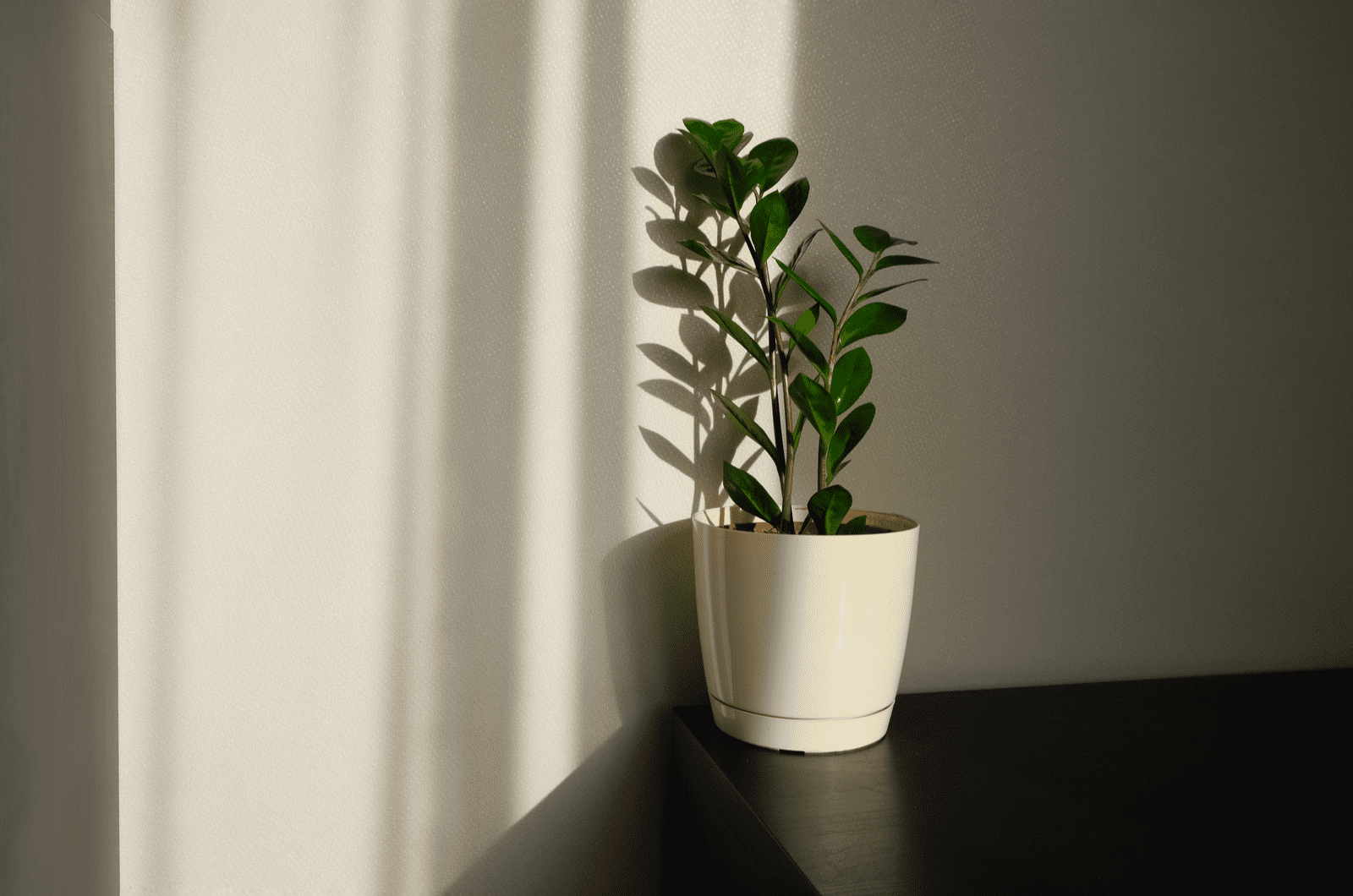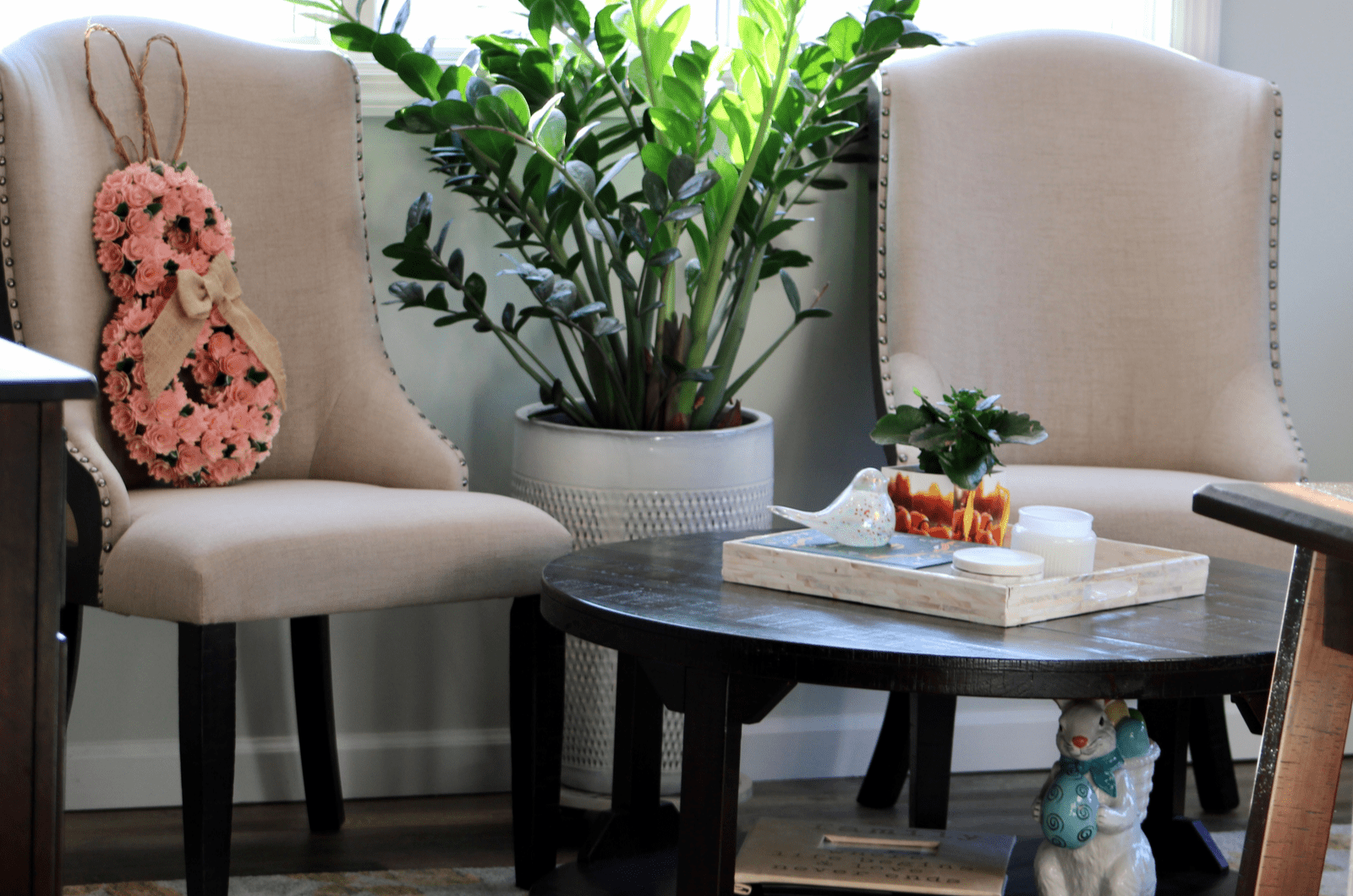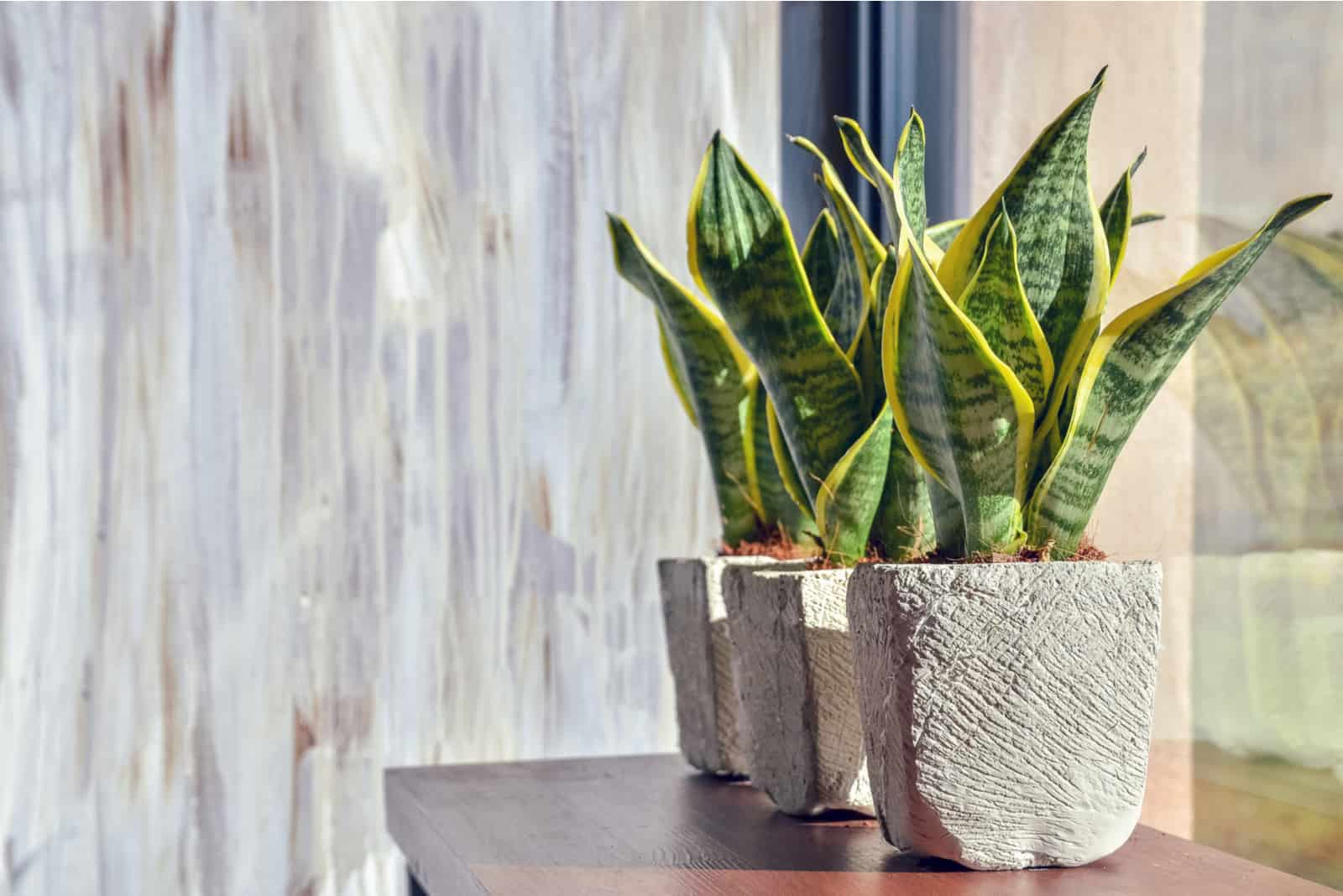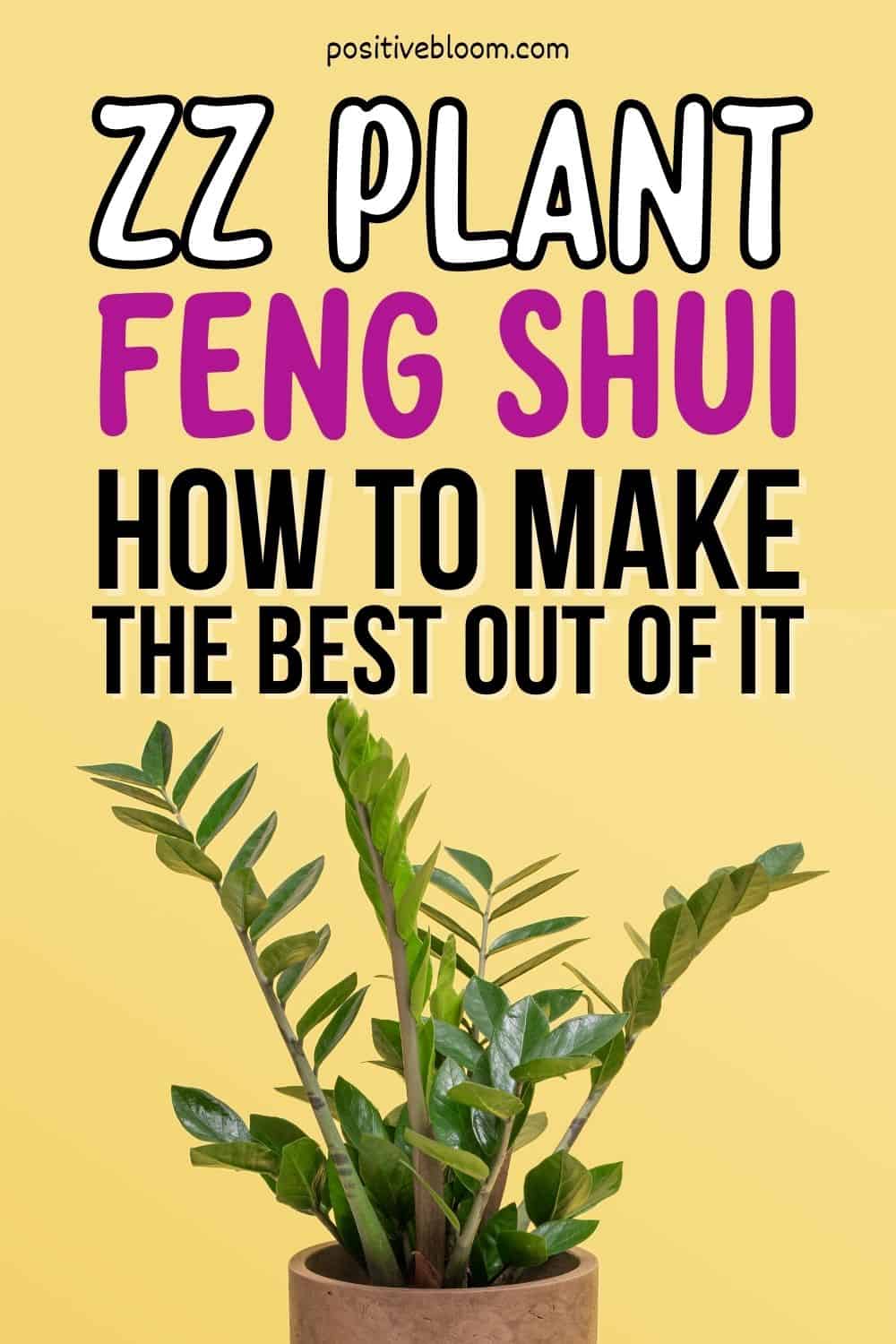Feng Shui has become very popular and is used all over the world, so it’s likely you’ve at least heard the name before.
So, what’s so special about Feng Shui art? The word “art” actually describes what Feng Shui really means.
Feng Shui refers to the arranging of items in a special way in order to bring positive energy and success to our lives.
Sounds great, right? A special part of this kind of art is houseplants. If you have been growing plants for long, you will know how great it is! It improves mental health in so many ways and is really rewarding.
According to Feng Shui, some plants bring wealth, success, peace, and more.
There are even more benefits to certain indoor plants; some are air-purifying and others have great medicinal uses.
One such plant is the magnificent Zamioculcas Zamiifolia, commonly known as the ZZ plant.
ZZ plant Feng Shui is a really interesting topic, so let’s learn everything about it!
ZZ Plant Feng Shui
The ZZ plant is also called the eternity plant, Zanzibar gem, and Fortune tree. It’s easy to grow, which makes it perfect for novice gardeners.
With its beautiful, broad, dark green leaves, it will undoubtedly brighten up your room and is also great for Feng Shui.
Why Grow A ZZ Indoors?
The question is, what does the ZZ plant attract according to Feng Shui?
The first thing this plant will bring to your home is harmony; it improves communication between family members and encourages you to support and trust each other.
The Zanzibar gem also attracts wealth to your home, but not just in terms of money; it improves friendships and opportunities.
Feng Shui has five elements and eight areas of life. A Bagua map organizes these areas, which align to create energy in households.
It will be pretty easy to arrange other houseplants once you have outlined your Bagua.
Indoor plants have distinct effects in Bagua areas, and the great thing is that most of them carry positive energy if mapped properly.
The ZZ plant is connected to many Bagua areas, but two stand out:
• Zhen: symbolizes family and new beginnings.
• Xu: symbolizes wealth and abundance.
ZZ’s Growth Symbolism
It’s important to know the ZZ’s growth rate and habits in relation to Feng Shui.
The ZZ is a slow grower, which means that it may take a little time to see its full beauty. The same applies to humans; it may take time for us to develop mentally or emotionally, but it’s worth the wait!
Zanzibar gem growth inspires us to follow a path slowly but safely, just like it does.
It eventually reaches its goal, and if you grow it, it will motivate you to achieve your aspirations and final goals too!
All types of ZZ plants have good resistance to harsh conditions. It will survive drought and always fights as hard as possible to reach its full size.
Hard work and dedication do the same for us. It may be hard sometimes, and seem like we aren’t gonna make it, but with persistence and will, hard work always pays off.
Where To Place An Eternity Plant?
If you decide to follow Feng Shui principles, the position for your ZZ should also meet the plant’s growth requirements.
This means you can’t solely rely on the principles of Feng Shui because your plant needs to grow healthy.
Let’s first discuss where to place a Zanzibar gem according to Feng Shui. The front entryway or dining room are ideal for the ZZ as they give a good and welcoming vibe.
Many feng shui experts think putting a ZZ plant in the southeast corner will bring greater prosperity and growth. However, not everyone can provide this position.
You can put your ZZ near a south-facing window, but you need to take a few things into account.
First, make sure the new ZZ’s spot doesn’t receive direct sunlight.
A ZZ doesn’t need much light, which makes it a perfect plant for offices with no windows.
Read on to find out about the perfect light conditions for ZZ plants.
Is The ZZ Plant Good For Bedrooms?
The answer is definitely yes! If you can provide your ZZ with adequate light conditions, your bedroom is the perfect place for an eternity plant.
The ZZ’s green leaves are perfect for Feng Shui because they represent fresh energy.
Good sleep + ZZ = a lot of energy!
Another great benefit of ZZ plants is that they purify the air.
ZZ And Sha Chi
Shai Chi is the bad guy in Feng Shui philosophy.
Sha Chi brings negative energy into your home, and everything you have done so far will be undone if you attract it.
When it comes to houseplants, the ZZ is a great choice for bringing good luck, but plants with spiky leaves are said to attract Sha Chi.
For example, cacti, dragon plants, and Agave are said to bring negative energy.
So, is the ZZ a bad luck plant? No, it’s actually one of the best plants according to Feng Shui.
Benefits Of Zamioculcas Zamiifolia
We have seen how the ZZ brings good Feng Shui, and there are even more benefits to these wondrous plants!
Let’s find out!
Air-purifying
The air cleansing abilities of houseplants have been studied for a long time. According to NASA’s revolutionary research on air-purifying plants in 1989, plants possess an extraordinary ability to take contaminants from the air via their leaves, roots, soil, and microorganisms.
In other words, Zanzibar gems improve air quality.
Plants purify indoor air of the following pollutants:
• Formaldehyde: may cause several complications, including irritations and nausea.
• Benzene: may cause anemia or affect the immune system.
• Toluene: may cause complications such as irritation, kidney damage, or skin inflammation.
• Xylene: may cause respiratory issues, headache, or vomiting.
• CO2: may cause difficulties with breathing, dizziness, or headaches.
Recent research supports the plant air purification properties, with Zanzibar gems particularly beneficial.
A 2014 study compared the ability of 15 different houseplants to remove xylene from contaminated air, and it discovered that Zamioculcas zamiifolia plants eliminated pollutants the most efficiently.
Low-maintenance
Although eternity plants have numerous advantages, they are best known for their hardiness.
Unlike many other houseplants, these plants are easy to care for, can tolerate relatively dry soil, grow well in low light, and do not require extensive trimming.
ZZ plants can withstand drought due to their robust rhizomes and succulent-like leaves that retain moisture efficiently.
If you occasionally skip watering, your ZZ will forgive you.
They are slow-growing plants, so you don’t have to worry much about repotting. They aren’t heavy feeders either, so that won’t take much of your time.
What a plant!
Easy To Propagate
When you’re ready to expand your plant collection, the easiest way to do so is by propagation.
The ZZ has one more excellent feature; you can propagate it quickly and easily!
You can choose between two methods: division and stem cuttings. If you are a beginner, I highly recommend the second option.
Let’s see how to propagate ZZs!
Rhizome Division
Here are the 4 steps to propagate a ZZ by division:
1. You need to get your ZZ out of its pot first. If your ZZ is mature, I recommend calling a friend for help because mature ZZs tend to be very heavy. You should lay the ZZ’s pot on its side.
2. Remove the soil from the pot’s borders (you can use your fingers). Jiggle the ZZ’s pot back and forth, pulling it carefully. Your ZZ should slide out soon.
3. There will almost certainly be several rhizomes arranged in clusters. Make sure the new ZZ has at least one cluster.
4. Place the cluster in a 1/2 potting soil and 1/2 succulent mix. All you need to do now is try not to overwater the new ZZ.
Here’s a video that should help:
Stem Cuttings
ZZ stem cuttings= new rhizomes and roots.
Here are the 4 steps to propagate your ZZ by stem cuttings:
1. Make a straight cut with a sterilized knife near the ZZ’s base to remove a stem.
2. Place the ZZ cuttings in the water and change the water every 3 days.
3. Put the ZZ cuttings in a spot that receives indirect light. This is the most effective technique to promote the growth of your cutting.
4. When new roots appear, it’s time for repotting!
Here is a video that should help you with propagation by stem cutting:
Drought-Resistant
ZZs have succulent-like leaves, so they retain water. Their thick rhizomes also retain water well.
These features make the ZZ drought-resistant.
You don’t have to worry about the watering schedule of your ZZ too much. Only water when the soil is dry, and be very careful because overwatering causes way more damage than underwatering.
Reduces Stress
A ZZ plant adds the final touch to home decor, purifies the air, and even makes us happier!
According to research, being surrounded by plants lowers stress and anxiety, lessens sadness, and enhances mood.
However, plant health advantages extend far deeper than that. Growing plants in the home has been shown to boost productivity and ignite creativity.
ZZ plants are a natural approach to decreasing stress, improving mood, and inspiring creativity.
Medicinal Uses
The ZZ is widely used as a medicinal plant, especially in Tanzania and Ghana.
Tanzanians grow ZZs for earache and inflammatory diseases.
In Ghana, shamans use ZZ to cure stomach aches.
ZZ plant Placement as per Vastu
Vastu Shantra comes from Sanskrit, and translates to “the science of architecture”.
According to Vastu, a ZZ should be placed facing north or east. Vastu experts claim that we should never keep withering plants indoors as it attracts negative energy.
The Zanzibar gem brings good fortune and luck according to Vastu.
ZZ Plant Care Guide
Now that you know all the ZZ plant benefits, it’s time to find out how to grow one!
This short care guide for eternity plants will really help you keep yours for as long as possible, even if it isn’t quite for eternity.
Watering
A rule of thumb is to water your ZZ only when its soil is dry, so check the soil to decide if it’s time for watering.
The amount of water required by your ZZ is determined by a variety of factors, such as light and temperature.
Underwatering shouldn’t cause much damage to your ZZ. It takes time for this plant to show signs of a lack of water.
On the other hand, be very careful with overwatering as it can cause black spots on ZZ plants.
Light
ZZ plants grow well even in low light conditions, but you should keep your ZZ away from bright light.
ZZ plants thrive in indirect light, and direct sunlight will cause way more damage than low light.
Humidity
The ZZ appreciates moderate humidity, so keep humidity levels between 40 and 50%.
It’s better to keep humidity above the upper limit than allow it to drop below 40%.
To increase humidity, you can use a humidity/pebble tray, place your ZZ in a kitchen or bathroom, or use a humidifier.
Temperature
If you want to keep your ZZ healthy, you will need to keep it in temperatures between 60 and 70 degrees Fahrenheit.
ZZ’s may withstand slightly lower temperatures, but if it drops below 45 degrees Fahrenheit you’ll have a problem.
Soil
Another great thing about the ZZ is that it doesn’t require any special soil.
As long as it is well-draining, your ZZ will grow well.
Add perlite to regular potting soil, and your ZZ will grow just fine.
What is the best fertilizer for a ZZ plant?
The ZZ isn’t fussy about fertilizing (is it fussy about anything at all?!). It will grow without fertilizer, but there’s nothing wrong with speeding things up a bit.
A balanced liquid fertilizer applied during the growing season should do just fine. Don’t fertilize your ZZ during the winter months as it enters dormancy in the fall.
Repotting
The ZZ needs repotting approximately every two years. Problems may occur if your ZZ becomes rootbound or if its rhizomes occupy too much space in the pot.
First, you should remove your ZZ from the original pot. You can do this by flipping the plant over to help it slide out easily.
Now remove the old soil because it may contain fungi. If your ZZ has any mushy or discolored roots, cut them with sanitized pruners.
Place your ZZ in a new terracotta pot with drainage holes, add more soil around it, and that’s it! Your ZZ has fresh soil and an adequate pot, so it will thrive in no time!
Best Feng Shui Plants
Now that you know the benefits of growing ZZ plants and how to use them in conjunction with Feng Shui, it’s time to find out which other plants are great according to Feng Shui philosophy.
Let’s get started!
Snake Plants
As well as harmony and wealth, your family needs protection and safety.
I’m sure you’re wondering if it’s possible to do this by growing plants.
Well, it’s definitely possible, and there is one great plant for it – the snake plant!
Although its name may not suggest that the plant is beneficial, trust me, it is.
Also known as the mother-in-law’s tongue (one more odd name), the snake plant grows upwards and has sword-like leaves.
Just like a sword can protect you from enemies, snake plants can protect you from negative energy and make your personal zone safer.
However, many claim that the mother-in-law’s tongue is bad for Feng Shui because of its leaves. Snake plants are quite the opposite, though; these defenders armor your energy against negativity.
According to Feng Shui, you can put snake plants anywhere you need good energy. If you are not productive at the office, get yourself a mother-in-law’s tongue!
Don’t worry about light or dry air; Sansevierias tolerates all conditions!
Spathiphyllum (Peace Lily)
You can guess the benefits of Spathiphyllum from its nickname – peace lily.
The peace lily, according to Feng Shui philosophy, soothes and harmonizes the energy of the home or business. It reduces the energy of disagreement and turmoil that may have previously afflicted the building.
This plant is thought to have powerful protecting and cleansing energies. Peace lilies are excellent at absorbing the insane positive ions that electrical devices emit.
It is also thought to be an excellent healing agent for cancer patients undergoing radiation treatment.
Philodendrons
Feng Shui experts highly recommend growing Philodendrons as houseplants. This plant is beloved among gardeners and part of many a living room.
The heart-shaped leaves of Philodendron plants represent the fire element in Feng Shui.
You can place them anywhere in your home where the energy seems to be low.
Growing Philodendron plants will attract abundance.
Pothos
Pothos are sometimes called money plants. If you find a good spot, these aroids attract wealth into your home.
A Pothos is an ideal plant for darker spots in your home, such as cabinets, due to its easy maintenance and low light requirements.
The plant will remain green even if it’s neglected slightly, and will still contribute vital energy to the space.
Worst Feng Shui Plants
Maybe it sounds strange, but some plants aren’t good for growing indoors according to Feng Shui.
So, if you want to arrange items in your household according to Feng Shui principles, here are some plants to avoid.
Plants With Spiky Leaves
Sharp needles and rough plant shapes are considered unfavorable in feng shui, and are said to attract negative energy.
These plants are interesting to collect and require little care, but they have no place in feng shui. Their needles are considered to irritate you and undermine your self-esteem.
Dying Plants
If you grow plants, I’m sure you do your best to keep them healthy, but discoloration or withering can occur for many reasons.
Any diseased plant attracts bad energy, so if you notice any issues you should react as soon as possible.
If you conclude that your plant can’t be saved, remove it from your house.
Fake Plants
Having fake plants is a big no-no for gardeners because you can’t enjoy watching them grow.
Feng Shui experts also suggest avoiding fake plants.
However, some homeowners either don’t have enough space or can’t provide proper conditions for live plants, so they need an alternative.
In this case, try to find realistic replicas of live plants.
FAQs
Is the ZZ plant a money tree?
The Pachira Aquatica is the real money tree. You will find the ZZ under another nickname, the fortune tree. Both plants bring luck and wealth into a house, so whichever you choose, you wont regret it.
Should I plant a ZZ plant outside?
ZZs are mostly grown as indoor plants, but they can grow well if planted outside. This will only be possible if you live in USDA growing zones 10-12. Anything lower than 45 degrees Fahrenheit will likely damage your ZZ. During winter, move your ZZ indoors to avoid any unnecessary issues.
What color is the ZZ plant in feng shui?
The ZZ plant has beautiful dark green leaves, and in Feng Shui, green means energy and new beginnings. You can combine the ZZ with other plants that have leaves of different shades of green. When choosing these plants, make sure they are also good for Feng Shui.
Wrapping Up
ZZ plant Feng Shui? Definitely yes! The ZZ is an ideal plant according to Feng Shui philosophy.
The ZZ plant has many benefits; it cleans the indoor air and is easy to grow. Additionally, this plant fits great into every space, especially entry points in homes.
Everyone will feel welcome when they see a ZZ at the front door.
It will bring harmony to your home and attract positive energy.
Is the ZZ plant lucky for homes? The answer is YES. Grow a ZZ, and you will undoubtedly be a happier person!
Until next time!
Like this post? Share or pin it for later!







